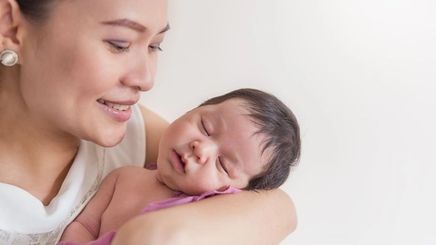
People always wax poetic about the downy smoothness of baby skin. While babies do have enviable soft skin, it isn’t always the case. About 20% of infants experience baby acne in the first few months of their life. The condition can be stressful for first-time parents and guardians. However, it’s nothing you can’t manage, mom!
Find out everything you need to know about baby acne, the ultra-low-maintenance way you can deal with it, and baby skin products you can trust.
Baby Acne Causes
Baby acne, otherwise known as neonatal acne or acne neonatorum, can appear within two weeks of your baby’s life. Based on research, it is more frequent in infant boys.
It usually manifests on your baby’s face, around the cheeks, chin, and forehead. However, it can also show up on the scalp, chest, and back. Your baby can develop a few “pimples” scattered on their skin, but the more “severe” displays can also look like bumpy patches. The color of the bumps can range from white to red.
There is no one reason behind the appearance of neonatal acne. However, the article “Neonatal and Infantile Acne Vulgaris: An Update” in Pediatric Dermatology lists some probable causes, including increased sebum excretion, stimulation of the sebaceous glands by maternal and neonatal androgens, and a reaction to Malassezia, which is a species of fungi.
Whatever the reason, baby acne typically clears up when the infant is about four months – although it could be longer in some cases.
What’s the Best Baby Acne Treatment?
As your baby adjusts to life outside, they will be experiencing some physical changes. Certain skin conditions, such as neonatal acne, milia, Mongolian spots, and cradle cap are common. Because they pretty much go away with time, having a “less is more” approach is the best route in choosing newborn products, especially since infant skin is much .
However, there are things you can do to avoid aggravating the situation.
1. Don’t treat it with acne medicine.
Neonatal acne is not at all like the zits you encounter as teens or adults. For one, these tiny bumps don’t have . They’re neither itchy nor painful, and they hardly present any discomfort to the infant. So, don’t be tempted to apply any to your baby’s skin. Keep using gentle baby products to protect the baby's skin from other irritants.
2. Avoid popping the pustules.
The best tip is to leave baby acne alone. Don’t fiddle with them, don’t scrub them – just don’t. These efforts may irritate your baby’s sensitive skin and invite actual problems, such as infection. The dirt and oil from your hands might also make the situation worse.
3. Wash your baby well and practice proper hygiene.
Some moms resort to home remedies to alleviate baby acne, such as dabbing breastmilk on the bumps. Whether you believe in these folk treatments or not, you shouldn't neglect to keep your baby’s skin clean and dry. Babies regularly spit up or dribble milk all over their faces. Wipe them up right away to prevent attracting unnecessary bacteria.
Bathe your baby in lukewarm water and use mild baby soap products to cleanse and nourish their skin. Baby Dove Hair To Toe Sensitive Moisture Wash has a pH-neutral that has been tested by dermatologists, ophthalmologists, and pediatricians. It's also a hypoallergenic soap for eczema with Dove’s signature 1/4 moisturizing cream to restore any moisture lost during bath time. It’s the perfect way to pamper your baby’s yummy skin.
When you see baby acne develop, stay calm and always use mild baby products. You’ve got enough on your plate, mom. Trust your instincts and check with a specialist if you think your child’s skin needs extra attention.